US Airways 2008 Annual Report Download - page 26
Download and view the complete annual report
Please find page 26 of the 2008 US Airways annual report below. You can navigate through the pages in the report by either clicking on the pages listed below, or by using the keyword search tool below to find specific information within the annual report.-
 1
1 -
 2
2 -
 3
3 -
 4
4 -
 5
5 -
 6
6 -
 7
7 -
 8
8 -
 9
9 -
 10
10 -
 11
11 -
 12
12 -
 13
13 -
 14
14 -
 15
15 -
 16
16 -
 17
17 -
 18
18 -
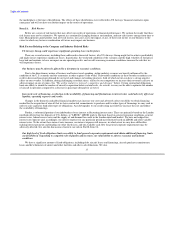 19
19 -
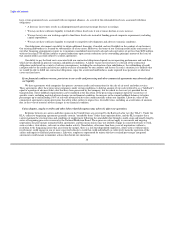 20
20 -
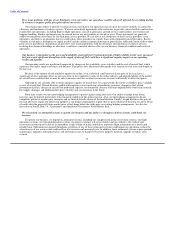 21
21 -
 22
22 -
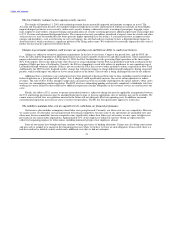 23
23 -
 24
24 -
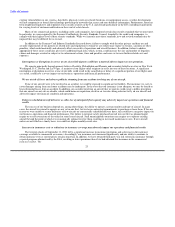 25
25 -
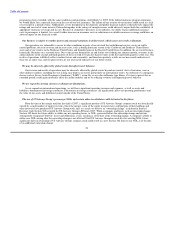 26
26 -
 27
27 -
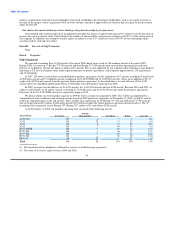 28
28 -
 29
29 -
 30
30 -
 31
31 -
 32
32 -
 33
33 -
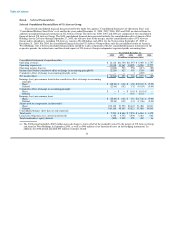 34
34 -
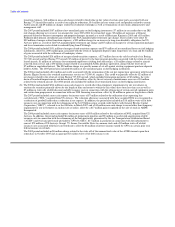 35
35 -
 36
36 -
 37
37 -
 38
38 -
 39
39 -
 40
40 -
 41
41 -
 42
42 -
 43
43 -
 44
44 -
 45
45 -
 46
46 -
 47
47 -
 48
48 -
 49
49 -
 50
50 -
 51
51 -
 52
52 -
 53
53 -
 54
54 -
 55
55 -
 56
56 -
 57
57 -
 58
58 -
 59
59 -
 60
60 -
 61
61 -
 62
62 -
 63
63 -
 64
64 -
 65
65 -
 66
66 -
 67
67 -
 68
68 -
 69
69 -
 70
70 -
 71
71 -
 72
72 -
 73
73 -
 74
74 -
 75
75 -
 76
76 -
 77
77 -
 78
78 -
 79
79 -
 80
80 -
 81
81 -
 82
82 -
 83
83 -
 84
84 -
 85
85 -
 86
86 -
 87
87 -
 88
88 -
 89
89 -
 90
90 -
 91
91 -
 92
92 -
 93
93 -
 94
94 -
 95
95 -
 96
96 -
 97
97 -
 98
98 -
 99
99 -
 100
100 -
 101
101 -
 102
102 -
 103
103 -
 104
104 -
 105
105 -
 106
106 -
 107
107 -
 108
108 -
 109
109 -
 110
110 -
 111
111 -
 112
112 -
 113
113 -
 114
114 -
 115
115 -
 116
116 -
 117
117 -
 118
118 -
 119
119 -
 120
120 -
 121
121 -
 122
122 -
 123
123 -
 124
124 -
 125
125 -
 126
126 -
 127
127 -
 128
128 -
 129
129 -
 130
130 -
 131
131 -
 132
132 -
 133
133 -
 134
134 -
 135
135 -
 136
136 -
 137
137 -
 138
138 -
 139
139 -
 140
140 -
 141
141 -
 142
142 -
 143
143 -
 144
144 -
 145
145 -
 146
146 -
 147
147 -
 148
148 -
 149
149 -
 150
150 -
 151
151 -
 152
152 -
 153
153 -
 154
154 -
 155
155 -
 156
156 -
 157
157 -
 158
158 -
 159
159 -
 160
160 -
 161
161 -
 162
162 -
 163
163 -
 164
164 -
 165
165 -
 166
166 -
 167
167 -
 168
168 -
 169
169 -
 170
170 -
 171
171 -
 172
172 -
 173
173 -
 174
174 -
 175
175 -
 176
176 -
 177
177 -
 178
178 -
 179
179 -
 180
180 -
 181
181 -
 182
182 -
 183
183 -
 184
184 -
 185
185 -
 186
186 -
 187
187 -
 188
188 -
 189
189 -
 190
190 -
 191
191 -
 192
192 -
 193
193 -
 194
194 -
 195
195 -
 196
196 -
 197
197 -
 198
198 -
 199
199 -
 200
200 -
 201
201 -
 202
202 -
 203
203 -
 204
204 -
 205
205 -
 206
206 -
 207
207 -
 208
208 -
 209
209 -
 210
210 -
 211
211 -
 212
212 -
 213
213 -
 214
214 -
 215
215 -
 216
216 -
 217
217 -
 218
218 -
 219
219 -
 220
220 -
 221
221 -
 222
222 -
 223
223 -
 224
224 -
 225
225 -
 226
226 -
 227
227 -
 228
228 -
 229
229 -
 230
230 -
 231
231 -
 232
232 -
 233
233 -
 234
234 -
 235
235 -
 236
236 -
 237
237 -
 238
238 -
 239
239 -
 240
240 -
 241
241 -
 242
242 -
 243
243 -
 244
244 -
 245
245 -
 246
246 -
 247
247 -
 248
248 -
 249
249 -
 250
250 -
 251
251 -
 252
252 -
 253
253 -
 254
254 -
 255
255 -
 256
256 -
 257
257 -
 258
258 -
 259
259 -
 260
260 -
 261
261 -
 262
262 -
 263
263 -
 264
264 -
 265
265 -
 266
266 -
 267
267 -
 268
268 -
 269
269 -
 270
270 -
 271
271 -
 272
272 -
 273
273 -
 274
274 -
 275
275 -
 276
276 -
 277
277 -
 278
278 -
 279
279 -
 280
280 -
 281
281 -
 282
282 -
 283
283 -
 284
284 -
 285
285 -
 286
286 -
 287
287 -
 288
288 -
 289
289 -
 290
290 -
 291
291 -
 292
292 -
 293
293 -
 294
294 -
 295
295 -
 296
296 -
 297
297 -
 298
298 -
 299
299 -
 300
300 -
 301
301 -
 302
302 -
 303
303 -
 304
304 -
 305
305 -
 306
306 -
 307
307 -
 308
308 -
 309
309 -
 310
310 -
 311
311 -
 312
312 -
 313
313 -
 314
314 -
 315
315 -
 316
316 -
 317
317 -
 318
318 -
 319
319 -
 320
320 -
 321
321 -
 322
322 -
 323
323 -
 324
324 -
 325
325 -
 326
326 -
 327
327 -
 328
328 -
 329
329 -
 330
330 -
 331
331 -
 332
332 -
 333
333 -
 334
334 -
 335
335 -
 336
336 -
 337
337 -
 338
338 -
 339
339 -
 340
340 -
 341
341 -
 342
342 -
 343
343 -
 344
344 -
 345
345 -
 346
346 -
 347
347 -
 348
348 -
 349
349 -
 350
350 -
 351
351 -
 352
352 -
 353
353 -
 354
354 -
 355
355 -
 356
356 -
 357
357 -
 358
358 -
 359
359 -
 360
360 -
 361
361 -
 362
362 -
 363
363 -
 364
364 -
 365
365 -
 366
366 -
 367
367 -
 368
368 -
 369
369 -
 370
370 -
 371
371 -
 372
372 -
 373
373 -
 374
374 -
 375
375 -
 376
376 -
 377
377 -
 378
378 -
 379
379 -
 380
380 -
 381
381 -
 382
382 -
 383
383 -
 384
384 -
 385
385 -
 386
386 -
 387
387 -
 388
388 -
 389
389 -
 390
390 -
 391
391 -
 392
392 -
 393
393 -
 394
394 -
 395
395 -
 396
396 -
 397
397 -
 398
398 -
 399
399 -
 400
400 -
 401
401
 |
 |

Table of Contents
program has been extended, with the same conditions and premiums, until March 31, 2009. If the federal insurance program terminates,
we would likely face a material increase in the cost of war risk insurance. The failure of one or more of our insurers could result in a lack
of coverage for a period of time. Additionally, severe disruptions in the domestic and global financial markets could adversely impact the
ratings and survival of some insurers. Future downgrades in the ratings of enough insurers could adversely impact both the availability of
appropriate insurance coverage and its cost. Because of competitive pressures in our industry, our ability to pass additional insurance
costs to passengers is limited. As a result, further increases in insurance costs or reductions in available insurance coverage could have an
adverse impact on our financial results.
Our business is subject to weather factors and seasonal variations in airline travel, which cause our results to fluctuate.
Our operations are vulnerable to severe weather conditions in parts of our network that could disrupt service, create air traffic
control problems, decrease revenue and increase costs, such as during hurricane season in the Caribbean and Southeast United States,
snow and severe winters in the Northeast United States and thunderstorms in the Eastern United States. In addition, the air travel business
historically fluctuates on a seasonal basis. Due to the greater demand for air and leisure travel during the summer months, revenues in the
airline industry in the second and third quarters of the year tend to be greater than revenues in the first and fourth quarters of the year. Our
results of operations will likely reflect weather factors and seasonality, and therefore quarterly results are not necessarily indicative of
those for an entire year, and our prior results are not necessarily indicative of our future results.
We may be adversely affected by global events that affect travel behavior.
Our revenue and results of operations may be adversely affected by global events beyond our control. Acts of terrorism, wars or
other military conflicts, including the war in Iraq, may depress air travel, particularly on international routes. An outbreak of a contagious
disease such as Severe Acute Respiratory Syndrome ("SARS"), avian flu, or any other influenza-type illness, if it were to persist for an
extended period, could again materially affect the airline industry and us by reducing revenues and impacting travel behavior.
We are exposed to foreign currency exchange rate fluctuations.
As we expand our international operations, we will have significant operating revenues and expenses, as well as assets and
liabilities, denominated in foreign currencies. Fluctuations in foreign currencies can significantly affect our operating performance and
the value of our assets and liabilities located outside of the United States.
The use of US Airways Group's pre-merger NOLs and certain other tax attributes could be limited in the future.
From the time of the merger until the first half of 2007, a significant portion of US Airways Group's common stock was beneficially
owned by a small number of equity investors. Since the merger, some of the equity investors have sold portions of their holdings and
other investors have purchased US Airways Group stock, and, as a result, we believe an "ownership change" as defined in Internal
Revenue Code Section 382 occurred for US Airways Group in February 2007. When a company undergoes such an ownership change,
Section 382 limits the future ability to utilize any net operating losses, or NOL, generated before the ownership change and certain
subsequently recognized "built-in" losses and deductions, if any, existing as of the date of the ownership change. A company's ability to
utilize new NOL arising after the ownership change is not affected. Until US Airways Group has used all of its existing NOL, future
significant shifts in ownership of US Airways Group's common stock could result in a new Section 382 limit on our NOL as of the date
of an additional ownership change.
24
